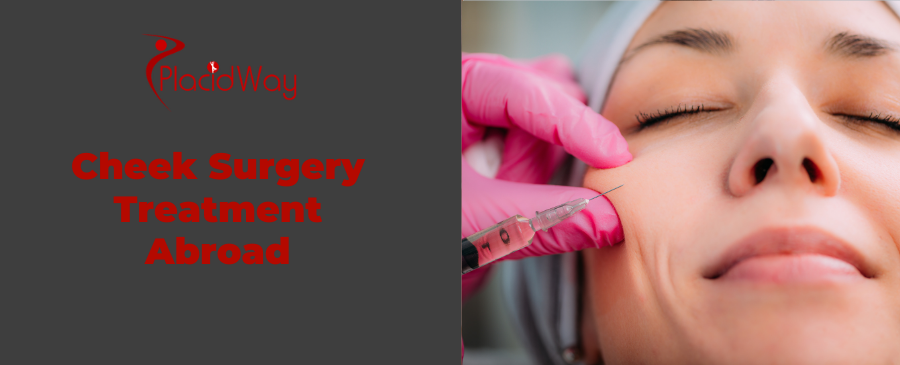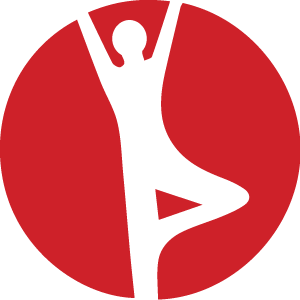
Unlock Your Ideal Facial Profile: Exploring Cheek Surgery Treatment Abroad
Our cheeks play a pivotal role in defining our facial aesthetics, influencing everything from perceived age to overall harmony. Whether you dream of more prominent cheekbones, a softer, fuller look, or a more sculpted facial contour, advancements in cosmetic surgery offer incredible possibilities. However, the cost and accessibility of these procedures can sometimes be a barrier.
This is where considering cheek surgery treatment abroad becomes an increasingly popular and viable option for many. Medical tourism for facial procedures like cheek enhancement or reduction allows individuals to access world-class care, state-of-the-art clinics, and highly skilled surgeons, often at a significantly lower cost than in their home country. But it's more than just savings; it's about finding the right expertise, exploring diverse treatment options, and combining your aesthetic journey with the experience of discovering a new culture.
From restoring youthful volume lost due to aging to creating a more defined and symmetrical facial structure, cheek surgery can dramatically impact your appearance and confidence. If you've been noticing a lack of definition, sagging, or simply wish for a different facial contour, understanding the symptoms, causes, and available treatments is your first step. Let's delve into everything you need to know about pursuing cheek surgery overseas.
What signs indicate I might benefit from cheek surgery?
Identifying the need for cheek surgery often comes down to personal aesthetic goals and how your current facial contours make you feel. Common indicators or "symptoms" that people seek to address with cheek surgery include:
- Loss of Facial Volume: As we age, the fat pads in our cheeks can diminish or shift, leading to a hollowed, sunken, or gaunt appearance.
- Sagging Cheeks and Jowls: Gravity, combined with a loss of elasticity, can cause the skin and soft tissues of the cheeks to droop, creating jowls along the jawline and blurring the crisp lines of the face.
- Flat or Undefined Cheekbones: Some individuals naturally have flatter cheekbones, leading to a less sculpted or less prominent mid-face, which they wish to enhance.
- Asymmetry: Differences in cheek size or projection can create an unbalanced facial appearance.
- Overly Full Cheeks: In some cases, individuals may have excess fat in the buccal (cheek) area, giving a "chubby" or less defined look they wish to reduce.
- Desire for More Youthful Appearance: Often, patients seek to restore the plumpness and lift associated with youth.
- Desire for Improved Facial Harmony: Cheek surgery can help balance other facial features, such as the nose or chin.
What factors contribute to changes in cheek appearance?
Understanding the underlying causes can help set realistic expectations and inform the most effective treatment plan. The most common factors influencing cheek appearance include:
- Aging: This is the primary culprit. Over time, the body produces less collagen and elastin, proteins vital for skin firmness and elasticity. The fat pads in the cheeks also atrophy, descend, or shift, leading to volume loss and sagging.
- Genetics: Your inherent bone structure and fat distribution are largely determined by genetics. Some individuals are naturally predisposed to having flatter cheekbones or a tendency for facial fat to accumulate or diminish in certain areas.
- Significant Weight Fluctuations: Both substantial weight gain and loss can impact facial volume. Rapid weight loss can lead to a gaunt appearance, while gain can result in fuller cheeks.
- Sun Exposure: Chronic exposure to UV radiation accelerates collagen and elastin breakdown, leading to premature aging, wrinkles, and skin laxity in the cheeks.
- Lifestyle Factors: Smoking, poor nutrition, dehydration, and lack of sleep can all contribute to reduced skin health and elasticity, exacerbating signs of aging in the face.
- Environmental Factors: Pollution and other environmental stressors can also contribute to skin damage.
What different types of cheek surgery procedures are available?
Cheek surgery is not a one-size-fits-all procedure. Depending on your goals – whether it's augmentation, reduction, or a lift – different techniques can be employed:
- Cheek Implants (Malar Augmentation): This involves surgically placing solid silicone implants directly over the cheekbones to add projection and definition. Implants are a permanent solution for enhancing naturally flat cheeks or restoring volume loss.
- Fat Grafting (Autologous Fat Transfer): Your own fat is harvested from another part of your body (e.g., abdomen, thighs) via liposuction, purified, and then injected into the cheeks to add natural-looking volume. This is a popular option for restoring a youthful fullness and can offer very natural results.
- Mid-Facelift (Cheek Lift): This procedure specifically targets the middle third of the face, lifting sagging cheek tissues upwards to a more youthful position. It can reduce nasolabial folds (lines from nose to mouth) and restore volume to the cheek area, addressing jowls.
- Buccal Fat Removal (Cheek Reduction): For individuals with overly full, "chubby" cheeks due to excess buccal fat pads, this procedure involves removing a portion of these fat pads through small incisions inside the mouth. The goal is to create a more sculpted, defined facial contour.
- Dermal Fillers (Non-Surgical Option): While not surgery, many patients initially explore hyaluronic acid-based dermal fillers for temporary cheek augmentation before considering permanent surgical options. These provide temporary volume and lift.
Who is an ideal candidate for cheek enhancement or reduction surgery?
To determine if you're a good candidate for cheek surgery, a comprehensive consultation with a qualified surgeon is essential. However, general criteria include:
- Good General Health: Candidates should be in good physical and mental health, without any medical conditions that could impair healing or increase surgical risks.
- Non-Smoker: Smoking significantly compromises circulation and healing, so surgeons typically require patients to quit well in advance of surgery.
- Realistic Expectations: Understanding what surgery can and cannot achieve is crucial for patient satisfaction. A natural, improved look is the goal, not perfection.
- Stable Weight: Significant weight fluctuations after surgery can alter results, so maintaining a stable weight is important.
- Specific Aesthetic Concerns:
- For augmentation: Individuals with flat or recessed cheekbones, significant mid-face volume loss, or those desiring more prominent cheeks.
- For reduction: Individuals with naturally full cheeks (due to large buccal fat pads) who desire a more sculpted, chiseled look.
- For lift: Individuals experiencing mild to moderate sagging of the mid-face, early jowl formation, and deepening nasolabial folds.
- Psychological Readiness: Being prepared for the surgical process, recovery, and potential emotional aspects of cosmetic change.
What is the typical recovery timeline after cheek surgery?
Recovery can vary depending on the specific type of cheek surgery performed, individual healing rates, and the extent of the procedure. However, a general timeline includes:
- Immediately After Surgery (Day 1-3): You will experience swelling, bruising, and some discomfort, which can be managed with prescribed pain medication. A compression garment or bandage may be applied. Eating soft foods is recommended.
- First Week: Swelling and bruising will be most prominent. Stitches (if external) are typically removed around day 5-7. You should avoid strenuous activities and keep your head elevated, even while sleeping. Most patients can return to light, non-strenuous work within 5-7 days.
- Weeks 2-4: Most significant swelling and bruising should subside, allowing you to resume more normal social activities. You might still experience some residual swelling, which can persist for several weeks. Strenuous exercise should still be avoided.
- Months 1-3: Residual swelling continues to dissipate, and the final results become more apparent. Incision lines will fade over time.
- Full Recovery (6-12 Months): While you'll see significant improvements much sooner, the complete settling of tissues and final aesthetic outcome can take up to a year.
Important Note: Following your surgeon's post-operative instructions meticulously is crucial for optimal healing and results.
What are the potential risks and side effects of cheek augmentation or reduction?
While cheek surgery is generally safe when performed by a qualified, experienced surgeon, it's important to be aware of potential risks and side effects:
- General Surgical Risks:
- Infection: Though rare, any surgery carries a risk of infection.
- Bleeding/Hematoma: Collection of blood under the skin.
- Adverse Reaction to Anesthesia: Although modern anesthesia is very safe, reactions can occur.
- Poor Scarring: While incisions are often discreet, visible scarring is a possibility.
- Specific Risks for Cheek Implants:
- Implant Displacement: The implant can shift from its intended position, requiring revision surgery.
- Implant Extrusion: Very rarely, the implant may erode through the skin.
- Asymmetry: Unevenness in cheek projection.
- Numbness or Nerve Damage: Temporary or, in rare cases, permanent altered sensation in the cheek area.
- Specific Risks for Fat Grafting:
- Unpredictable Fat Survival: Not all grafted fat cells survive, requiring touch-up procedures.
- Lumps or Irregularities: Uneven distribution of fat.
- Asymmetry.
- Specific Risks for Buccal Fat Removal:
- Asymmetry.
- Over-resection: Removing too much fat can lead to a hollowed appearance over time.
- Nerve damage.
Choosing an accredited facility and a board-certified surgeon significantly reduces these risks.
How much does cheek surgery cost globally?
The cost of cheek surgery is a major factor for many patients, and it can vary dramatically based on the type of procedure, the surgeon's fees, anesthesia costs, facility fees, pre- and post-operative care, and crucially, the geographical location. Below is a general comparison, but always remember these are estimates and can fluctuate.
| Procedure Type | USA/Canada/UK (Estimate USD) | Popular Medical Tourism Destinations (Estimate USD) | Potential Savings Abroad |
|---|---|---|---|
| Cheek Implants | $4,000 - $8,000+ | $2,000 - $5,000 | 30% - 60% |
| Fat Grafting to Cheeks | $3,500 - $7,000+ | $1,800 - $4,500 | 25% - 50% |
| Buccal Fat Removal | $2,500 - $6,000+ | $1,500 - $3,500 | 30% - 50% |
| Mid-Facelift | $6,000 - $15,000+ | $3,000 - $8,000 | 40% - 60% |
These figures often include the surgeon's fee, anesthesia, and facility costs. When comparing costs, always ask for an "all-inclusive" package to avoid hidden fees.
Why consider cheek surgery treatment abroad?
The decision to travel for medical care, especially cosmetic surgery, is personal. However, several compelling reasons draw patients globally for cheek surgery overseas:
- Significant Cost Savings: As seen in the table above, the primary driver for many is the substantial reduction in costs, often without compromising quality. This makes life-changing procedures more accessible.
- Access to Expert Surgeons: Many countries are home to world-renowned plastic surgeons who specialize in facial aesthetics and have extensive experience with cheek contouring procedures.
- State-of-the-Art Facilities: International clinics catering to medical tourists frequently boast cutting-edge technology and modern infrastructure, often comparable to or exceeding facilities in Western countries.
- Reduced Waiting Times: In some regions, patients face long waiting lists for cosmetic procedures. Traveling abroad can mean getting treatment much sooner.
- Privacy and Anonymity: For some, undergoing cosmetic surgery away from home offers a sense of privacy and the chance to recover without immediate scrutiny from friends, family, or colleagues.
- Combined with a Vacation: Many patients appreciate the opportunity to recover in a pleasant, often luxurious, environment, transforming their medical journey into a unique travel experience.
Which countries are popular for affordable and quality cheek surgery?
Several countries have established themselves as leaders in medical tourism, particularly for cosmetic procedures like cheek surgery, due to a combination of affordability, quality, and hospitality:
- Turkey: Particularly Istanbul, is a powerhouse for cosmetic surgery. Known for highly skilled surgeons, excellent facilities, and very competitive pricing, often offering all-inclusive packages.
- Mexico: Bordering the U.S., Mexico is a convenient option for North American patients. Cities like Tijuana and Cancun offer reputable clinics and surgeons at a fraction of the cost.
- Thailand: A long-standing favorite for medical tourists, especially for cosmetic and gender affirmation surgeries. Bangkok and Phuket provide world-class hospitals and a strong focus on patient care amidst beautiful recovery settings.
- South Korea: Often considered the capital of cosmetic surgery, particularly for facial procedures. While sometimes pricier than other options, it's known for its incredibly advanced techniques and stunning, natural-looking results, attracting those seeking specialized expertise.
- Colombia: Especially cities like Medellin and Cali, are gaining recognition for highly trained plastic surgeons and modern clinics, offering competitive prices in Latin America.
What should I expect when traveling for cheek surgery overseas?
Traveling for medical treatment requires careful planning. Here's a general overview of what to expect:
- Initial Consultation (Remote): Most clinics abroad offer virtual consultations to assess your needs, discuss options, and provide a preliminary quote.
- Travel Arrangements: Book flights and accommodation. Many medical tourism facilitators (like PlacidWay) can assist with travel logistics, transfers, and even specialized recovery resorts.
- Pre-Operative Appointment: Upon arrival, you'll have an in-person consultation, physical examination, and necessary tests to ensure you're fit for surgery.
- The Procedure: The surgery itself will take place at the accredited facility.
- Hospital Stay (if required): Depending on the procedure, you might stay overnight in the hospital or recover in a nearby hotel/recovery center.
- Post-Operative Care & Follow-ups: You'll have several follow-up appointments with your surgeon to monitor healing, remove stitches, and provide detailed aftercare instructions before you're cleared to travel home. This phase usually requires staying in the country for 1-2 weeks.
- Recovery Period: While you'll do initial recovery abroad, full healing continues at home. Ensure you have support and are prepared for the recovery timeline.
It's vital to have clear communication with your medical team abroad and ideally, a local contact for any unexpected needs.
How can I ensure safety and quality when getting cheek surgery abroad?
Safety and quality should be paramount. While many clinics abroad offer excellent care, due diligence is key:
- Choose Accredited Facilities: Look for international accreditations like JCI (Joint Commission International) or local government licensing that signify high standards of patient care and safety.
- Verify Surgeon Credentials: Research your surgeon's qualifications, experience, board certifications (e.g., in plastic surgery), and specialization in facial aesthetics. Ask to see before-and-after photos of their previous patients.
- Read Patient Reviews and Testimonials: Look for independent reviews on platforms like PlacidWay, Google, or specialized medical tourism forums.
- Consult with Multiple Providers: Don't settle for the first option. Get opinions and quotes from a few different clinics/surgeons to compare.
- Understand the Full Package: Ensure the quote includes all costs: surgeon's fees, anesthesia, facility fees, follow-up appointments, and any necessary medications.
- Communicate Clearly: Ensure there's no language barrier with your surgeon and medical team. Using a facilitator can help bridge this gap.
- Medical Tourism Facilitators: Companies like PlacidWay specialize in connecting patients with vetted, high-quality international providers, streamlining the process and offering an added layer of security and support.
- Travel Insurance: Consider purchasing travel insurance that includes medical coverage for complications, just in case.
Take the Next Step with PlacidWay
Ready to explore treatment options abroad? Discover top clinics, compare prices, and get a free quote tailored to your needs with PlacidWay.
Cosmetic Surgery Abroad, Plastic Surgery Abroad





.png)

.png)
.png)

Share this listing